Similarly, accounts receivable are presented in the balance sheet at their net realizable value. Net realizable value is the approximate amount of cash that a company expects to receive from receivables at the time of their collection. Book Value literally means the value of the business according to its “books” or financial statements.
Therefore, after revaluing the building, the company would adjust the book value of the building by subtracting the accumulated depreciation from the current market value. As a result, the adjusted book value of the building would be $1.25 million ($1.5 million – $250,000). Companies operating in highly volatile markets or those experiencing significant inflation often prefer CVA. This includes industries like real estate and commodities, where market values fluctuate frequently. Hybrid Approaches have also been current value accounting suggested, where certain assets are valued at historical cost and others at current value, depending on their nature and the industry in which the company operates.
Chapter 3 – Financial statements and the reporting entity
But it is also relevant for monetary assets where waiting is the primary factor determining the net benefit to be received in cash by the firm. Using the Hicks definition of income, economists express income as the net present value of expected future cash flows, discounted at a reasonable rate of discount. Historical cost valuation is also disadvantageous because it fails to permit the recognition of gains and losses in the periods in which they may actually occur. Working capital is that part of capital which is required to meet the day to day expenses and for holding current assets for the normal operations of the business. However, it is still advisable to retain profits ad restrict dividends so as to enable funds for replacement of fixed assets.
The debate between historical cost and current value continues to evolve as the business environment changes, highlighting the need for a balanced approach in financial reporting. The choice between them can significantly impact the financial health portrayal of a company, affecting decisions made by investors, creditors, and other stakeholders. The ongoing debate underscores the need for a nuanced approach that considers the unique circumstances of each business and asset. Asset valuation is a cornerstone of finance, serving as the bedrock upon which investment decisions, financial analysis, and business strategies are built.
Measurement Techniques
This approach enhances transparency and relevance, as stakeholders receive information mirroring the prevailing economic environment. For example, investors benefit from understanding how changes in market conditions affect the value of a company’s financial instruments. Fair value accounting also aligns with international standards, promoting comparability across global markets. Balancing historical costs and current values is essential for accurate financial reporting, investment decision-making, and regulatory compliance. While historical costs provide stability and reliability, current values reflect market reality and economic trends.
BAR CPA Practice Questions: Required Financials and Disclosures for Employee Benefit Plans
This technique of price level accounting has been followed by a number of companies in Germany, Australia and U.S.A. But although this method is simple, it may be considered as only a first step towards inflationary accounting. Market value is the observed and actual value for which an asset or liability is exchanged. It reflects the current value of the investment as determined by actual market transactions. Fair value is a measure of a product or asset’s current market value and a reflection of the price at which an asset is bought or sold when a buyer and a seller freely agree. Transitioning to CCA can be complex, especially for large companies with established accounting systems.
- A company owning real estate purchased decades ago would report significantly different asset values and potentially different financial health depending on whether historical cost or current value is used.
- By focusing on replacement cost, CCA provides a more realistic view of an entity’s financial position, particularly in volatile economies.
- Historical cost also prevents the overvaluation of assets, especially during times of high volatility.
- Asset and liability valuations fluctuate with market conditions, leading to potential changes in reported earnings.
- Current value accounting is important because it considers the current market effects and provides a more realistic approach towards determining the monetary value.
What Is the Intrinsic Value of a Stock?
This can lead to increased volatility in reported earnings, as market changes directly impact valuations. For example, during economic uncertainty, the fair value of financial instruments can fluctuate significantly, affecting a company’s balance sheet and income statement. Fair value also represents the value of a company’s assets and liabilities when a subsidiary company’s financial statements are consolidated with a parent company.
- The primary users of the financial statements require information which helps them to make economic decisions with regards to the reporting entity.
- Although, this study is literature approach, having explored rationale for fair value accounting, IFRS 13 sets out a framework for measuring fair value; and requires disclosures about fair value measurements.
- This valuation concept requires the knowledge or estimation of three basic factors—the amount or amounts to be received, the discount factor and the time periods involved.
- Book value simply implies the value of the company on its books, often referred to as accounting value.
In the present situation it mind find out that efforts behind all these variants is leading to non-optimal utilisation of resources. In other words it might be profitable for the company to leave behind some of the variants. At this level, the marketer prepares an expected product by incorporating a set of attributes and conditions, which buyers normally expect they purchase this product. The cost of goods sold is calculated on the basis of their replacement cost to the business and not on their original cost. In case depreciation is charged on original cost, after 10 years we shall have Rs 1, 00,000 from the total depreciation provided.
Capital Stock
Current value accounting requires the periodic up-dating of values (of assets and liabilities) to keep pace with new market reality and other entity-specific developments. Moreover, estimating the current value of illiquid assets can be complex and subjective, as it often involves making assumptions about future cash flows, discount rates, or other variables. These estimates can vary depending on the methodologies and assumptions used, and they can be influenced by management’s biases or incentives. Thus, as a prediction of future cash outflows, current input costs, and expected future input prices are more significant than past input valuations. In the prediction of future cash receipts, output concepts are generally superior to input valuation concepts.
Alongside this, the Conceptual Framework specifically mentions items used in a combination to generate cash flows by producing goods or services to customers. As these items are unlikely to be able to be sold separately without penalising the activities, a cost-based measure is likely to provide more relevant information, as the cost is compared to the margin made on sales. The Conceptual Framework says that historical cost may not provide relevant information about assets held for a long period of time and is certainly unlikely to provide relevant information about derivatives. In both cases, it is likely that some variation of current value will be used to provide more predictive information to users. The Conceptual Framework explains that the carrying amount of non-financial items held at historical cost should be adjusted over time to reflect the usage (in the form of depreciation or amortisation). Alternatively, the carrying amount can be adjusted to reflect that the historical cost is no longer recoverable (impairment).
While current value accounting can provide a more realistic assessment of a company’s financial position, it also has its challenges. The main one is that market prices can fluctuate significantly over time, which can lead to large swings in the reported value of assets and liabilities, and consequently in reported earnings. This can make a company’s financial results appear more volatile than they would under historical cost accounting. The future of asset-based valuation in accounting is a subject of considerable debate and speculation. As businesses and economies evolve, the methods used to value assets must also adapt to reflect changing realities.
It is difficult to determine a fair value for an asset if there is no active market for it. Accountants will use discounted cash flows will determine a fair value by determining the cash outflow to purchase the equipment and the cash inflows generated by using the equipment over its useful life. If a construction business acquired a truck worth $20,000 in 2019 and decided to sell the truck in 2022, comparable sale listings of the same used truck may include two trucks priced at $12,000 and $14,000. The estimated fair value of the truck may be determined as the average current market value, or $13,000.
Expert Opinions on Valuation Methods
The British Government had appointed a committee known as Sandilands Committee under the chairmanship of Mr. Francis C.P. Sandilands to consider and recommend the accounting for price level changes. The committee presented its report in the year 1975 and recommended the adoption of Current Cost Accounting Technique in place of Current Purchasing Power of Replacement Cost Accounting Technique for price level changes. (1) It is not possible to find accurately the replacement cost till the replacement is actually made.
Under the historical cost principle, most assets are to be recorded on the balance sheet at their historical cost even if they have significantly increased in value over time. For example, marketable securities are recorded at their fair market value on the balance sheet, and impaired intangible assets are written down from historical cost to their fair market value. The finance team updated the balance sheet to reflect the current value of all assets, ensuring that our financial statements provide an accurate representation of the company’s actual worth. Cost has been the most common valuation concept in the traditional accounting structure.
(iii) In a country like India, even the price indices may not be correct and it may further cause inaccurate presentation of the financial statements. The IASB concluded that substance over form was not a separate component of faithful representation. The IASB also decided that, if financial statements represented a legal form that differed from the economic substance, then they could not result in a faithful representation. Hence, assuming five years have passed since the company purchased the building, the total depreciation would be $250,000 (5 years x $50,000 per year).



